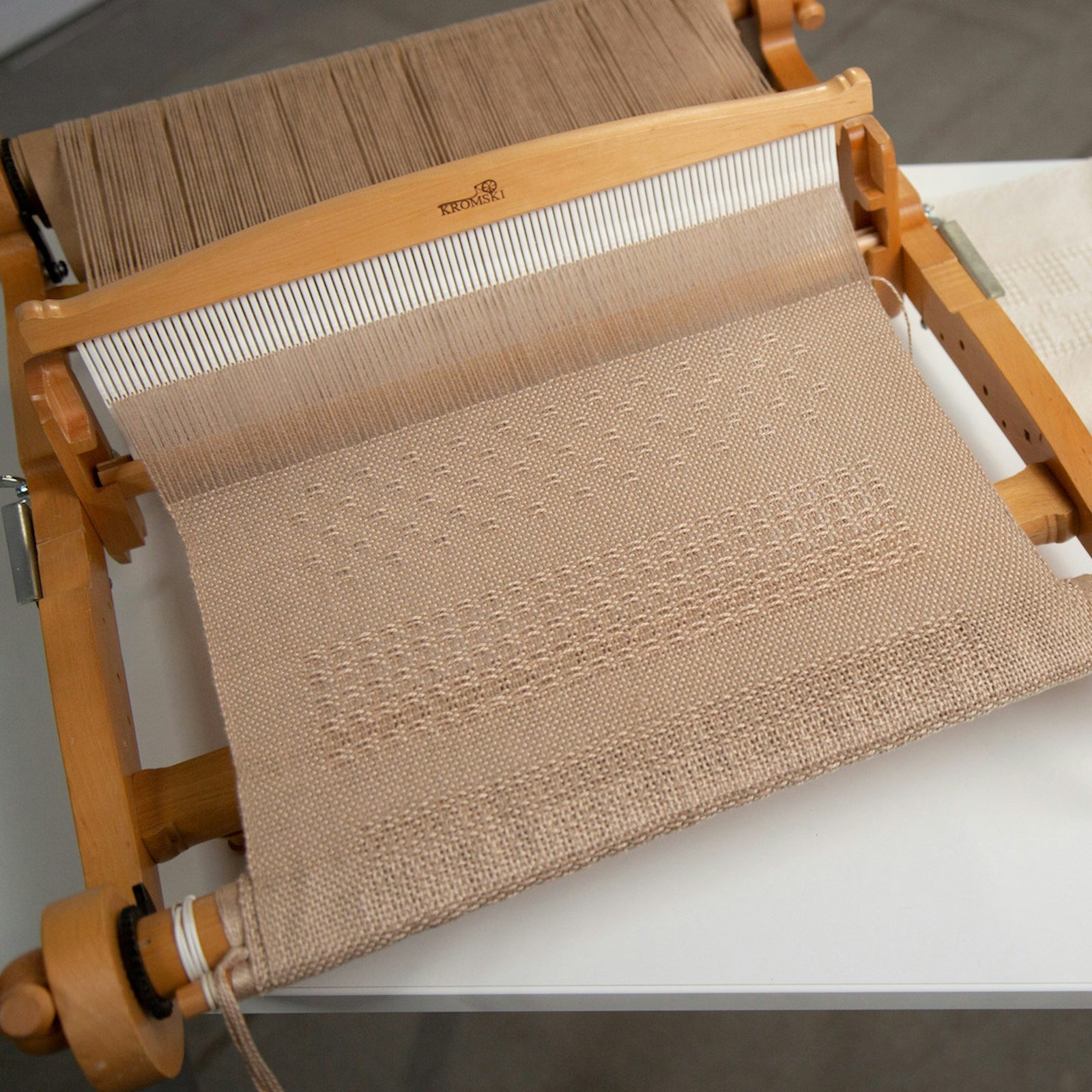I enjoy weaving on both rigid-heddle looms and shaft looms. I especially like direct warping a rigid-heddle loom; it's so easy and intuitive! Although I don’t mind winding a warp on a warping board and then beaming, threading, and sleying that warp on a shaft loom, I’ll do just about anything to avoid all of those steps on a rigid-heddle loom.
Even when I’m warping uneven numbers of ends or multiple tiny stripes, or even log cabin, I do my best to figure out a work-around, which often includes lots of cutting and tying at the peg. I’ve learned to leave a pair of scissors at both ends of my warp.
Here are some of the adventures I’ve had while direct warping:
I dropped my rigid-heddle on the ground before securing the threaded ends. The good news was that the warp was arranged perfectly on the back beam, so I could pick the ends up in correct order and put them back through the rigid heddle’s slots and holes.
I direct warped a rigid-heddle loom, decided I didn’t like one color, cut it out, rolled back to the front, and then added in a new color. I don’t remember how, but a lawn chair was involved.
I placed my rigid-heddle loom on one side of the peninsula in my kitchen and the peg on the other. The warp was striped, which meant that for every color change, I had to walk around the peninsula and kitchen table. It was like a workout.

Warping around a can of tomatoes—red, to match the warp. Photo by Susan E. Horton
I direct-warped a rigid-heddle loom using a large can of tomatoes as my warping peg. This isn’t recommended for very long or wide warps, but it works in a pinch. It teaches you not to put tension on your warp because if you do, the can starts inching towards the loom.
I tied my warp on the apron rod of my rigid-heddle loom before I pulled the ends through the holes—an error I’ve repeated more than once. I get all ready to weave, and then: Surprise! No shed.
Let me know if you've done any of these!
Sometimes half the fun of direct warping is figuring out a solution to problems of peg placement, warp order, or just plain saving a warp.
Weave well,
Susan

